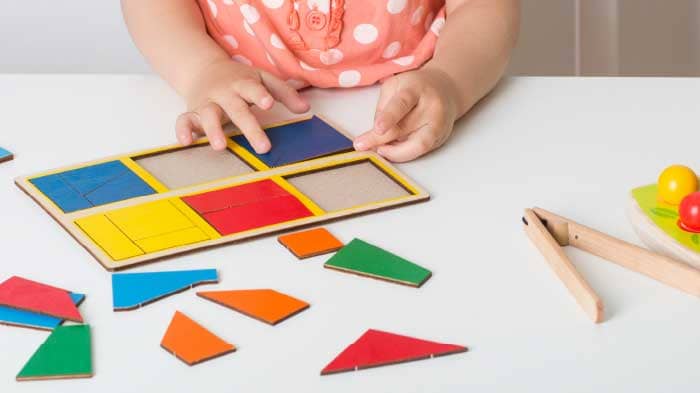Types of Learning Styles: The Ultimate Guide
Types of learning styles refer to the preferred learning methods individuals use to acquire, process, and retain information. If you're wondering, 'What are the different types of learning styles?' join us as we explore these individualized learning styles and pathways to effective education.
Different Types of Learning Styles
1. Visual Learning Style
Visual learning style is one of the main types of learning styles. This learning style involves a preference for learning through visual aids like charts and other visual aids to understand and remember information.

Individuals with this style benefit from seeing information presented in a graphical format rather than through verbal explanations. Techniques such as mind mapping and color coding can be particularly effective for visual learners.
How to Teach Visual Learners
Guide visual learners effectively by incorporating visual aids, flow charts, and interactive diagrams. Encourage them to create visual summaries and engage in activities that enhance their visual understanding.
Do you need an app providing personalized daily plans and a fun learning experience? MentalUP is your answer! ✅
MentalUP caters to auditory, kinesthetic, visual, and, ultimately, all types of learning styles for students and adults, with activities designed to optimize cognitive development. Plus, thanks to its adaptive algorithms, it adjusts the level of difficulty in games. 😎
MentalUP has been awarded for its effectiveness in improving intelligence through regular engagement. It is time for you to join 10 million MentalUP users worldwide! 🌍
2. Auditory Learning Style
This is one of the most common types of student learning styles. On the contrary to different types of learning styles, the auditory learning style revolves around a preference for learning new concepts or information through listening and verbal communication.

Individuals with this style excel in understanding and retaining information through lectures, discussions, and auditory cues. They may benefit from techniques such as verbal repetition, recording lectures, and participating in group discussions to enhance their learning experience.
How to Teach Auditory Learners
Foster auditory learning by incorporating oral presentations, discussions, and group activities. Provide opportunities for verbal expression and encourage the use of recordings for reinforcement.
3. Kinesthetic Learning Style
If you are wondering what are types of learning styles that enjoy hands-on activities, the kinesthetic learning style is the answer. These learners prefer hands-on activities and physical experiences for learning as they store information through experiences.

Individuals with a kinesthetic learning style excel through touching, moving, and interacting with objects. Techniques like role-playing and experiments enhance their understanding and skills to retain information.
How to Teach Kinesthetic Learners
Facilitate kinesthetic learners by incorporating hands-on activities, simulations, and real-world examples. Encourage physical movement and interactive learning experiences.
4. Reading/Writing Learning Style
This is one of the main four types of learning styles that include individuals who usually perform very well on written assignments. This is because individuals with the reading/writing learning style enjoy learning through written words and text-based materials.

Individuals with this style develop themselves in understanding and retaining information through reading and writing activities such as reading books, taking notes, and writing summaries. They may benefit from techniques like creating outlines, writing essays, and using flashcards to reinforce their learning.
How to Teach Reading/Writing Learners
Cater to reading/writing learners by emphasizing written assignments, descriptive writing, and textual analysis. Provide opportunities for written expression and comprehension.
5. Solitary Learning Style
The solitary learning style, also known as intrapersonal learning, involves individuals preferring to learn independently. Although generally identified as one of the most common types of learning styles for adults, some children also love the freedom to study alone.

Solitary learners often benefit from techniques like self-study, journaling, and setting personal learning goals to enhance their understanding and retention of information. These individuals prefer working on projects or tasks at their own pace.
How to Teach Solitary Learners
Support solitary learners by fostering self-directed study habits. Provide resources for independent learning, including worksheets and activities that encourage solo exploration.
6. Logical/Analytical Learning Style
The logical/analytical learning style refers to a preference for learning through systematic and structured approaches. Individuals with this learning style tend to excel when they can analyze information, detect patterns, and apply logical reasoning to solve problems.

When considering different types of learning styles for students, we can say that individuals with a logical/analytical learning style thrive in environments that emphasize critical thinking, problem-solving, and structured approaches to learning.
How to Teach Logical/Analytical Learners
Break down complex concepts into smaller, manageable parts, and encourage them to analyze information systematically. Utilize visual aids, logical frameworks, and real-world examples to illustrate concepts and help them understand the underlying principles.
7. Linguistic Learning Style
Verbal-linguistically talented individuals thrive in academic pursuits like reading and writing, showcasing adept expression and attentive listening skills. Their remarkable memory retention extends to both written and spoken content.

Those inclined towards verbal-linguistic learning styles exhibit a profound fascination with language. They delight in expanding their vocabulary and revel in the creative manipulation of language, evident in endeavors such as poetry.
How to Teach Linguistic Learners
Cater to linguistic learners by emphasizing reading, writing, and storytelling. Encourage verbal expression and provide opportunities for communication through various mediums.
8. Mathematical Learning Style
Mathematical learning style refers to one's ability to analyze cause and effect relationships, reason, solve problems, and learn using numbers and abstract visual information.

They may benefit from techniques such as working with numbers, solving puzzles, analyzing data, and applying mathematical principles to real-world situations to enhance their learning experience.
How to Teach Mathematical Learners
Guide mathematical learners through structured reasoning, numerical analysis, and problem-solving. Encourage the classification of abstract patterns and foster logical thinking through engaging activities.
Are you looking for fun games for mathematical learners? MentalUP's math games are here to help! 🎉
The MentalUP platform includes hundreds of math games in categories like subtraction, multiplication, geometry, and algebra. The platform enables kids or even adults to play online and enjoy testing and improving their math skills. 💯
Why wait? You can expand your or your kids' mathematical intelligence with entertaining games thanks to MentalUP! 🚀
Types of Learning Styles and Examples
So far, we have explained all types of learning styles, each uniquely showcasing how individuals absorb information. We may have answered your question "What are the 4 types of learning styles?" in the previous section; now, we will explain the different types of learning styles and examples.
1. Visual Learning Style Examples
Imagine a student who excels in grasping concepts through visual aids. For instance, when learning about the solar system, they thrive on detailed diagrams, charts, and colorful illustrations.

Similarly, when studying historical events, they may find it helpful to examine timelines or maps to understand the sequence of events and geographic locations involved. Their understanding blossoms when visual elements depict complex relationships, making the subject come alive before their eyes.
2. Auditory Learning Style Examples
Individuals with an auditory learning style often excel in professions that heavily rely on listening and verbal communication. For instance, a language interpreter effectively translates spoken words between different languages, relying on their acute auditory skills to capture nuances accurately.

Similarly, a radio broadcaster captivates audiences through engaging spoken communication, leveraging their talent for verbal expression. Additionally, a musician thrives in composing and performing music, finely tuning their auditory senses to recognize and replicate intricate musical patterns.
3. Kinesthetic Learning Style Examples
Kinesthetic learners, also known as tactile learners, learn best through hands-on activities and physical experiences. For example, in a science class, kinesthetic learners might benefit from conducting experiments, manipulating objects, and physically interacting with models to understand concepts like gravity or chemical reactions.

In a language class, they may learn vocabulary words by acting them out, playing language games that involve movement, or participating in role-playing exercises. Overall, kinesthetic learners learn most effectively when they can incorporate movement and physical experiences into their learning process.
Don't know what types of learning styles are there and which one suits you best? 🔮
You can use MentalUP's learning style test to uncover your unique approach to learning. It's quick and suitable for all ages, requiring just 10 minutes of your time. ⏰
Our aim with this learning styles test is to help you unlock your potential by identifying your individual learning style. MentalUP can be your guide on your or your kids' learning journey! 👏
4. Reading/Writing Learning Style Examples
Reading/writing learners learn through written assignments, analyze texts, and articulate ideas through expressive writing. For example, in a literature class, they might read novels, poems, or plays to analyze themes, characters, and literary devices.

These learners may find it helpful to create their own study guides or summaries of course materials. This process of condensing information into their own words reinforces their understanding and serves as a valuable resource for review.
5. Solitary Learning Style Examples
Solitary learners may prefer to immerse themselves in books, articles, or online resources related to their areas of interest. For example, a solitary learner interested in astronomy might spend hours reading books about space exploration or browsing articles on astrophysics websites.

Also, solitary learners can enhance their understanding of complex topics by journaling and reflecting on their learning experiences. For instance, after completing a challenging reading assignment, they might write down their thoughts, questions, and observations to deepen their comprehension.
6. Logical/Analytical Style Examples
When learning a complex concept like calculus, logical learners can break it down into smaller, more manageable components. They might start with understanding basic derivatives, then move on to integrals, and gradually build up to more advanced topics like differential equations.

For linguistic subjects, logical learners can apply critical thinking skills to evaluate arguments, identify biases, and discern the validity of sources. They might systematically analyze evidence to form well-supported conclusions.
MentalUP is a no-ads learning app that individuals can enjoy exercising their brains and bodies at their own pace! 🙌
MentalUP entails 150+ scientific games that improve individuals' different types of learning styles in children and adults. The platform recognizes individuals' learning patterns and provides them with colorfully designed online games that expand their memory, concentration, logic, and other skills. 🎮
Start using MentalUP now to enjoy brain games and also hundreds of fitness exercises anytime, anywhere, and on any device! 💻📱
7. Linguistic Learning Style Examples
Individuals with linguistic learning styles typically learn best through language-based activities. For example, when learning a new language, they might listen to native speakers, audio lessons, or dialogues to improve their pronunciation and comprehension skills.

They often benefit from techniques like verbal repetition, mnemonic devices, and explaining concepts aloud to reinforce their understanding. This learning style is particularly advantageous in fields like literature, journalism, and law, where effective communication is crucial.
8. Mathematical Learning Style Examples
Individuals with a mathematical learning style often prefer to start with basic principles and gradually build upon them, step by step, until they grasp the entire process. In a physics class, they might excel at understanding complex formulas because they can see the logical connections between different variables and how they interact.

When faced with a real-life problem, such as budgeting finances or planning a schedule, they might approach it analytically, breaking it down into manageable parts and systematically finding solutions.
Benefits of Implementing the Right Learning Style
Now, you know how many types of learning styles there are and how people with the different types of learning styles can learn. Let’s explore the benefits of recognizing and accommodating the types of learning styles for educators or parents.
- Tailoring education to individual learning styles fosters a deeper comprehension of complex concepts.
- Matching teaching methods with preferred learning styles boosts student interest and participation.
- Aligning content delivery with learning preferences enhances information retention and long-term memory.
- Adapting to diverse learning styles allows for a customized and more effective educational experience.
- Implementing the right learning style promotes efficient study techniques tailored to individual preferences.
- Success in learning through a preferred style enhances self-confidence and academic performance.
- Embracing varied learning approaches cultivates adaptable and lifelong learning skills.
- Creating a harmonious match between teaching methods and learning styles contributes to a positive and enjoyable learning journey.
Unlock the full potential of tailored learning with MentalUP! 💡
Regardless of age or preferred learning style, the MentalUP platform offers an array of engaging cognitive and physical education games. That’s why it is recognized as one of the most effective learning apps by world-leading universities. 🏆
Plus, MentalUP also includes screen-time limiting features and performance-tracking tools to provide the most effective experience possible. 📊





